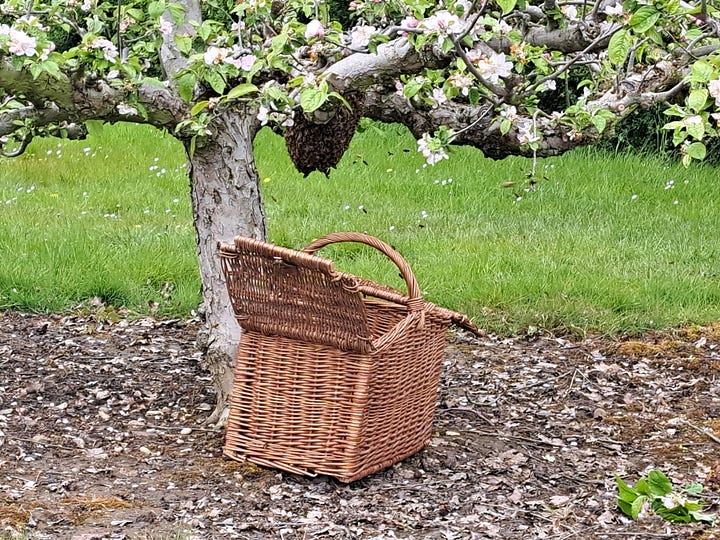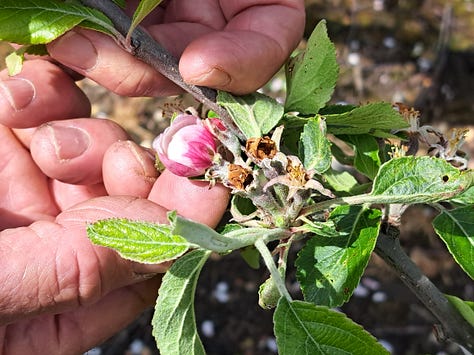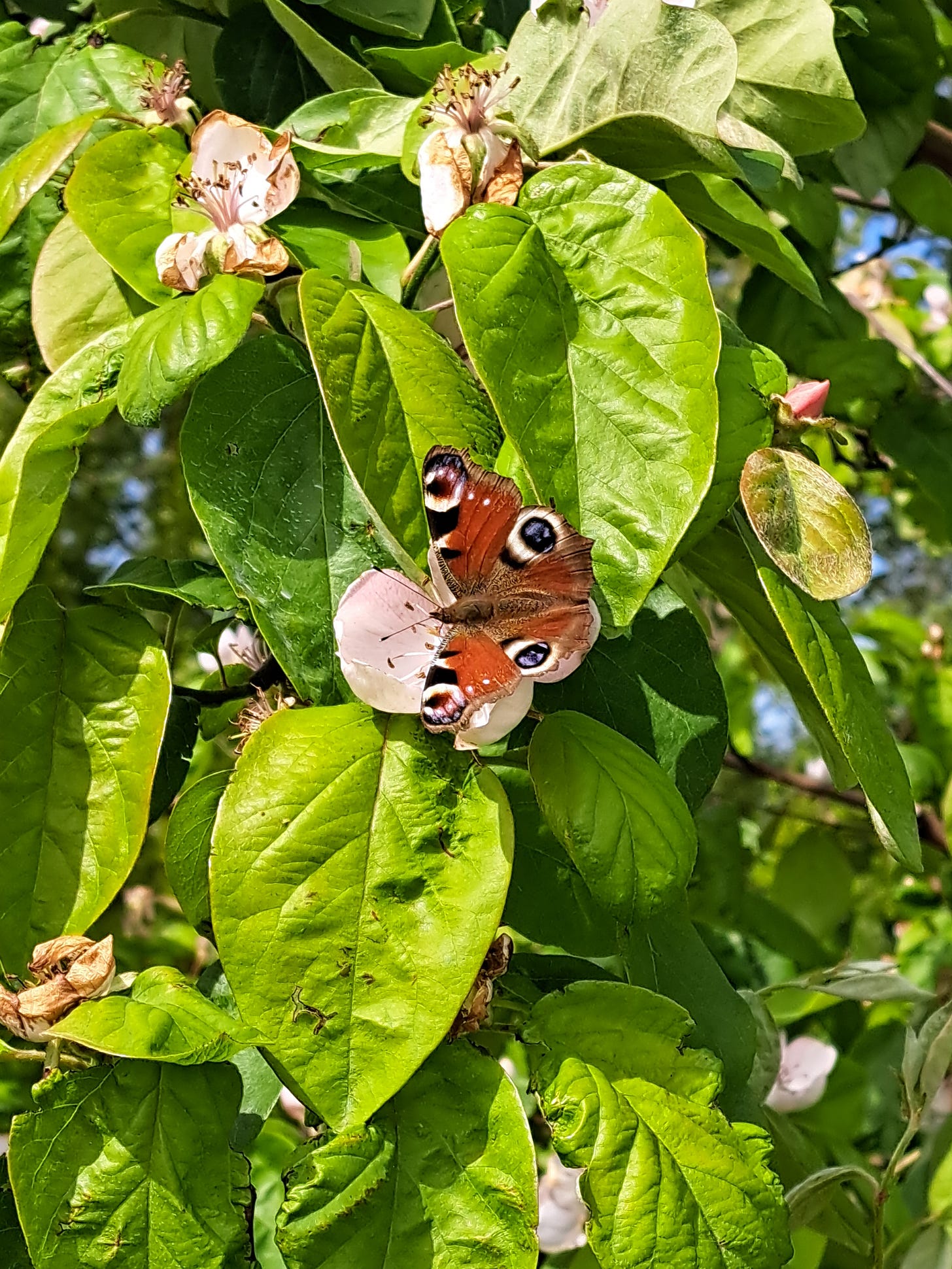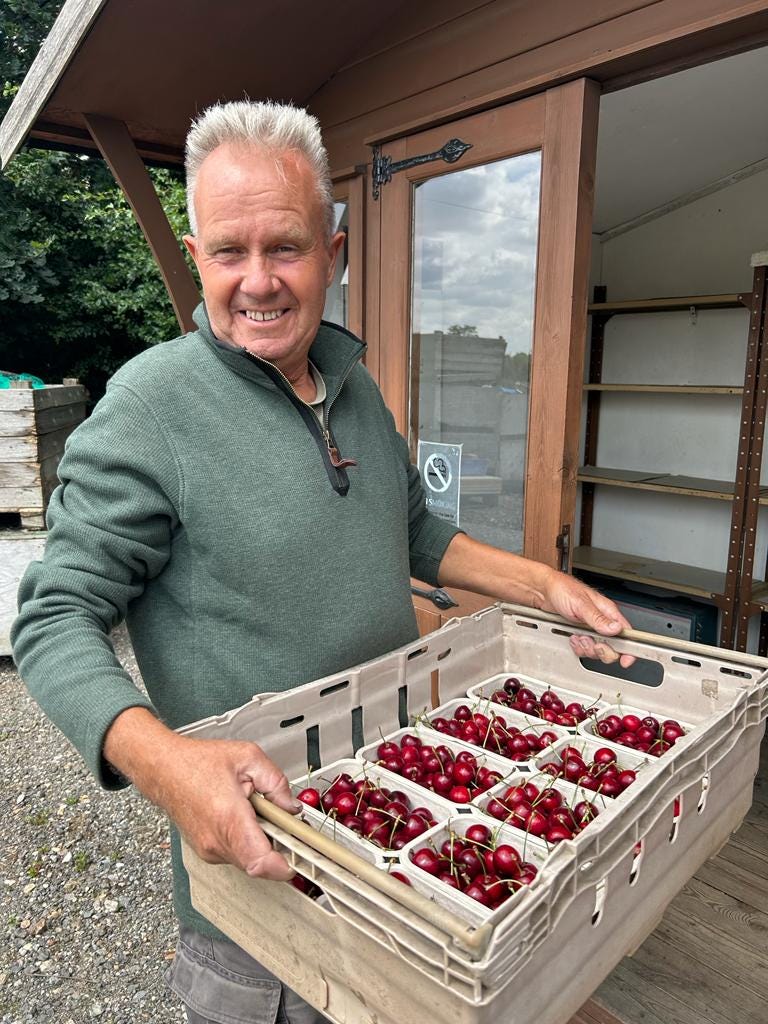Walking through a fruit orchard when it’s full of blossom is one of life’s greatest pleasures. To see the shades of pink and white, inhale the scent, hear birds singing, watch robins following, see a butterfly alighting on quince blossom to feed on the nectar and notice bees burrowing into flowers is spring captured into a moment in time.
Malcolm Stone is the custodian of Pippins Orchard on the outskirts of Chelmsford. He maintains and prunes his 1310 fruit trees on 3 3/4 acres single handed, apart from his trusty ladies who come to help him to hand thin the fruit buds and to pick the fruit at harvest time. Walking around the orchard with Malcolm is like being introduced to old friends. He knows which variety is which, the life cycle and health of each one, pointing out a ‘dear old tree’ to me.
Every apple variety has a story. There’s poetry in each name, from D’Arcy Spice to Blenheim Orange. Alongside his apple and pear trees he grows quince, cherry, plum and gages. Most of Malcolms’ varieties will never be found inside a supermarket. You need to buy them from him directly.
Here’s Malcolm talking about the varieties he grows
He spent 14 years with Boxford Farms who founded Copella fruit juice, followed by contract work for growers in Essex before his first opportunity to rent an orchard came up in 2000.
His fruit trees rely on insect pollination. Bee hives arrive in March-April when the plums will be coming into flower. The hives stay in the orchard until the middle of May. They’re an insurance policy; on bad weather days the bees will still be out pollinating the blossom. No pollination, no fruit. Whilst we were looking at the hives, Malcolm spotted a wild swarm of bees on a tree and immediately called his local honey man who carefully knocked the swarm into a basket, left them to settle and returned for them in the evening.


We’ve had the wettest winter and spring since records began and as a result everything in the garden is not always lovely. Malcolm showed me hail damaged leaves and fruit buds and damage from apple blossom weevil that bores into young fruit causing brown capped blooms. We saw trees that had been standing in water all winter, suffering root loss; the roots are literally drowned and the trees die off. Trees that had been targeted by the local deer population. Plums, greengages and cherries are protected by netting to prevent wood pigeons from indulging in a free feast. With the wasps as Malcolm says, it’s a race against time…



The winter months are the time for pruning. Malcolm thins the crop from late May to improve fruit size and quality. July is cherry season, followed by the first plums. Apples and pears are picked from August until October-November. Early varieties go into a chiller to be sold first as they don’t keep for more than a few weeks. Main crop apples are taken to Kent to be stored in a controlled environment where constant temperature management, humidity management, and carbon dioxide helps delay ripening. The fruit keeps until the stores are opened, which means that Malcolm has produce to sell until the end of March-April, by which time the season is already overlapping with the new years tasks.
Many years ago when I lived in Brixton and shopped at Electric Avenue market, customers requested either green or red apples, never named varieties. All except one old fashioned stall that sold Cox’s Pippins and Russets. We’re all familiar with the Disney apple; the big, shiny waxed red apple with a one dimensional taste. Malcolm calls them ‘‘commodity apples, the type that supermarkets like to stock.’’
He adds; ‘‘Our English climate contributes to nice flavoured fruit if you give it the care and attention it needs’’.
And the best part of his job?
You can buy Malcolm’s fruit at his honesty hut at his orchard, in peak season between mid July and October, season depending, and at Ealing and West Hampstead farmers markets in London. You can buy as much or as little as you want, and all the fruit is sold open without plastic. If Pippins Orchard is nowhere near you, get to know your local fruit grower at your closest farmers market. You’ll taste characterful fruit with complex flavours, as far from the commodity apple as it’s possible to be.
Customers often turn up at Malcolms’ orchard in early Autumn, it’s the bonus for forging a relationship with the people who grow your food. I’ll return to the subject of apples in October.






